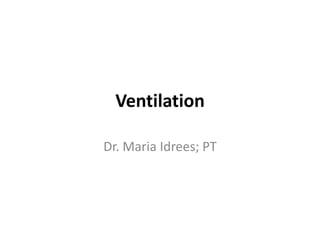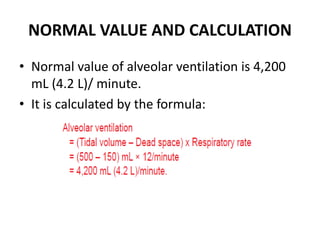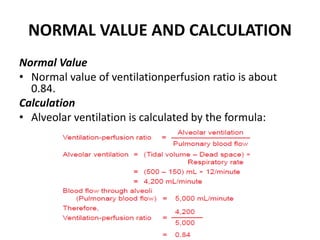This document discusses different types of ventilation in the respiratory system. It defines pulmonary ventilation as the movement of air in and out of the respiratory tract, normally 6 L/minute. Alveolar ventilation is the amount of air used for gas exchange, normally 4.2 L/minute. Dead space is the part of the respiratory tract where no gas exchange occurs, including the anatomical dead space from the nose to terminal bronchioles and the physiological dead space from non-functioning or poorly perfused alveoli. The ventilation-perfusion ratio represents the matching of alveolar ventilation to blood flow for gas exchange.
















